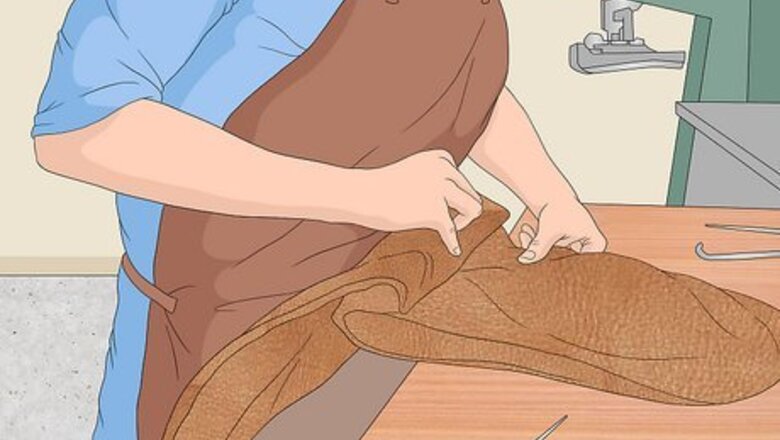
views
Recycling Old Leather
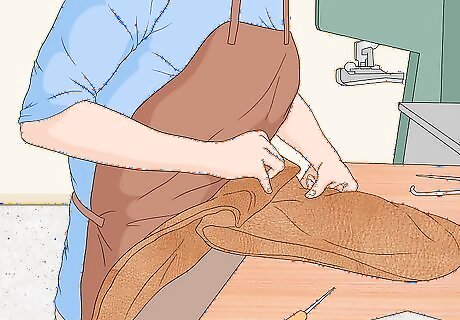
Take gently-worn leather goods to be fixed professionally. Cobblers and general shoe and bag repair shops often have the equipment to make repairs including patching, stitching and stretching and can restore your leather goods to extend their life. Don’t buy new: fix your favourites instead as a sustainable option. Repairing is a good choice if the damage is minor and you don’t want to say goodbye to the item just yet. Most repairs are straightforward with the correct equipment and can be done while you wait. Some cobblers offer a full treatment service for leather which might take a few days to complete. Avoid restoring leather goods at home because of the chemicals used in the manufacturing process.
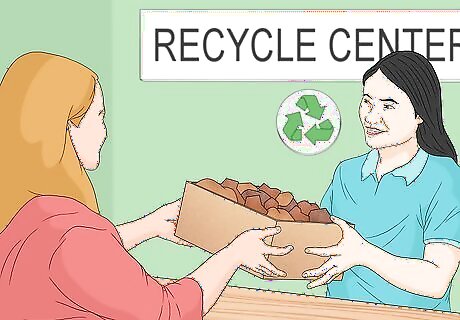
Take leather scraps to a recycling outlet for resale. The environment will thank you for taking leather scraps to be resold to others for many purposes including craft projects. Some industrial level companies also recycle leather to be used again in their products. Check what specific items can be recycled by ringing your local recycling centre. All centres have different rules about what can and cannot be accepted, and how to best prepare your items for recycling such as cleaning them first at home. Reduce waste in the process. 70 pounds of textiles per person per year are thrown out with only 15% repurposed. If you can't recycle them, take leather scraps to a local organisation such as a school, theatre group or non-profit who can always find new uses for old items. Reduce the amount of reusable items simply going to landfill.
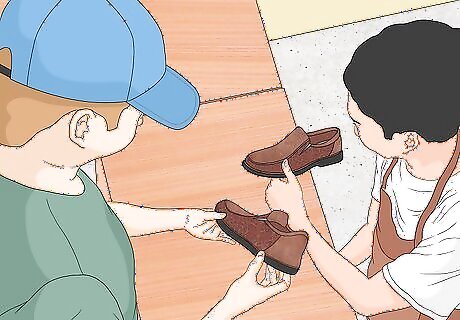
Donate worn leather shoes to a local charity. Many nonprofit organisations will collect your used footwear and pass it on to those in need in the community. Carefully inspect and clean your shoes to appraise their quality and decide if someone else could still get life out of them. Visit http://www.soles4souls.org to donate your shoes to be distributed to help relieve poverty in all 50 American states and 127 countries all around the world. Your donations create sustainable jobs in developing nations. Host a shoe drive and get your community involved.
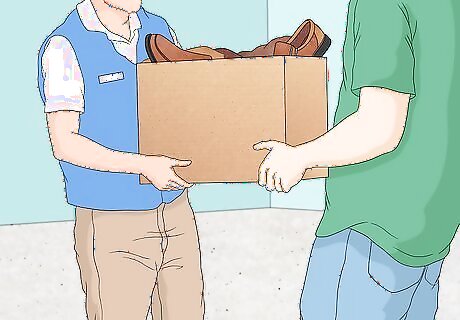
Donate clothes and bags to a goodwill store. Use the internet to find a goodwill store in your neighbourhood and give back to your community. Decide what items you want to donate. Some thrift stores will accept worn goods and others may not. Ring in advance to make sure the store accepts the items you have prepared. You don't want to load up your car with items only to find that they cannot be donated. Donate items and create jobs. Goodwill stores will sell your items in store or online and use the revenue to fund employment training and opportunities in the community. Check out http://www.goodwill.org/ to find your local retail store and donation outlet.
Upcycling Leather Items Creatively
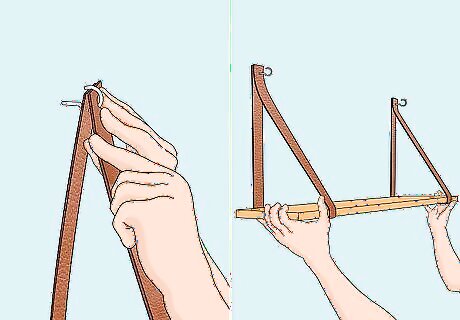
Use your old belts to make a ‘shelf’. Once you have finished wearing a belt, you can still use it in a variety of handy ways around the home, including to create a unique hanging shelf. It’s easy, cheap and saves space in your bedroom, bathroom or TV room. Begin by using two or more leather belts and a simple wood shelf sourced from recycled pallet wood. Choose belts that complement each other in colour. A long black belt and a couple of shorter, dark brown belts work well. Secure the leather belts to the shelves using glue or a staple gun to create straps that are solid and sturdy. Hang the straps from a metallic hook attached to the wall using a hammer and arrange the shelf to sit at a 90 degree angle against the wall. Adjust the straps to the right height for easy access to the shelf to hold books, bottles or ornaments.
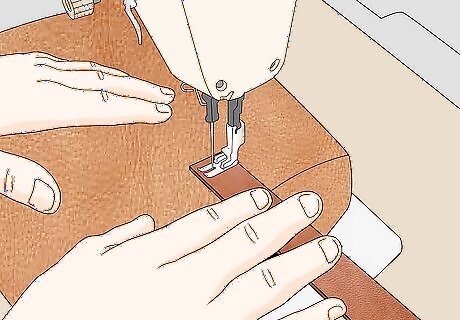
Create funky new handles for a handbag. You can cut leather scraps into small strips to be used as handbag handles simply by using a ruler and a craft knife. Lay the leather down grain side up and use the ruler edge as a cutting line. Make lots of small passes with the knife for thick leather. Pin the leather strips to the bag at the top where the sides join together. Remove any existing handles first to give yourself space to work. Sew the new handles on using a heavy duty sewing machine and a fresh needle. Every stitch leaves a permanent hole so plan your sewing in advance using tailor’s chalk to mark out where you plan to stitch. Alternatively you can use a strong glue to hold them in place. Be sure to allow the glue to dry before using the bag.
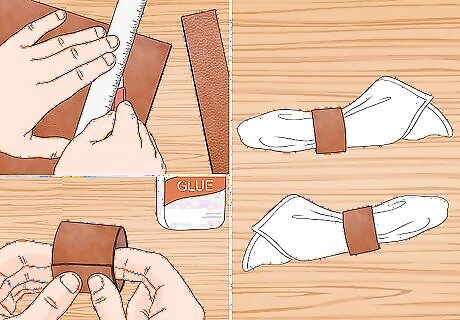
Create a set of new napkin rings for your dining room table. Guests will want to know where you got your unique napkin rings from. Cut leather scraps into small tube-shaped pieces using a ruler and a craft knife. Punch holes in each one using a nail and a hammer, and overlap the edges to create rings. Glue the pieces together using a strong craft glue and allow to dry.
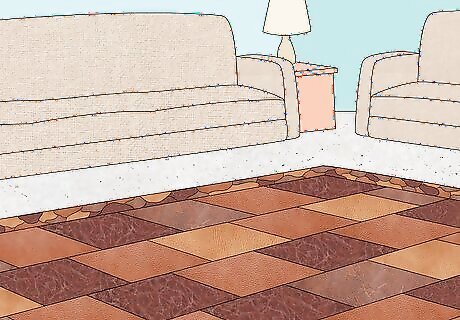
Make a one of a kind rug for the living room. Ask your friends and family to donate their old leather goods to you. If you have enough scraps, you can make a large rug for the living room. Cut your leather scraps into small pieces. If you want to, you can stain them so they are all the same colour. Using the floor to spread out the pieces, rearrange them into an interesting geometric pattern. Glue the pieces together with a strong craft glue using a piece of matting as a backing layer.




















Comments
0 comment